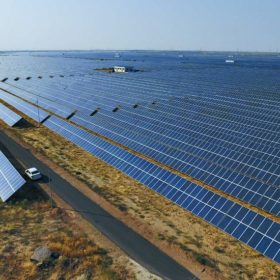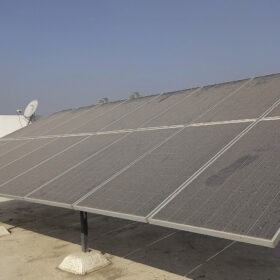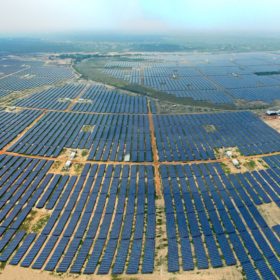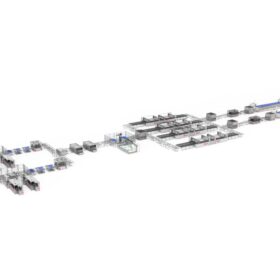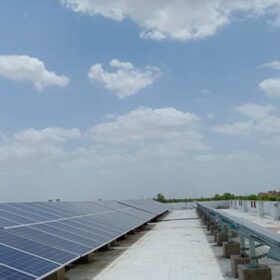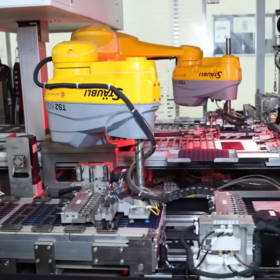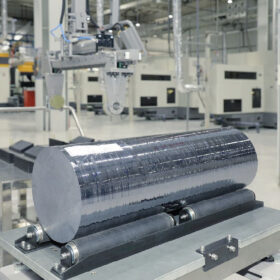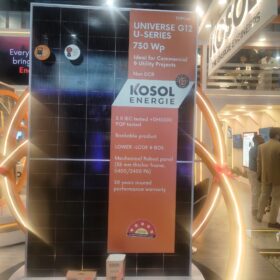SJVN tenders 1.5 GW of firm power from renewables with storage projects
The state-run hydropower producer has issued a tender to select developers for the supply of 1.5 GW of firm and dispatchable power from renewable power projects with energy storage system. The projects can be located anywhere in India, provided these are connected to the interstate transmission system.
NSEFI awarded Special Consultative Status by UN ECOSOC
The National Solar Energy Federation of India (NSEFI) has been awarded special consultative status by United Nations Economic and Social Council (ECOSOC).
VIT researchers study the impact of soling on solar modules
Scientists from the Vellore Institute of Technology in India carried out a comprehensive study into the impacts of soiling on PV modules – measuring the amount of performance loss caused by different types of dust and bird droppings, and for modules installed at various tilt angles, in the hot-dry climate of Vellore in southern India. Their findings could allow developers to better take into account and mitigate the effects of soiling during site selection and system design.
Tamil Nadu must add up to 32 GW of new renewables capacity and phase down coal to meet ‘50% RE by 2030’ target
Tamil Nadu will need to add around 32 GW of solar energy capacity (or 28 GW of wind) and retire most of the existing coal power plants in the next six years to meet its 2030 target of 50% renewables in the total power mix, according to a new report by Auroville Consulting. Tha analysts assumed no change in the state’s generation of nuclear energy and gas energy in this period.
Torrent Power allotted land for 3 GW of renewable energy projects in Gujarat
The integrated power utility, which targets 5 GW of renewables capacity in the next five years, has been allotted 6,000 hectares of land to develop green hydrogen and renewable energy projects in Gujarat.
India’s Nithin Sai to start making solar panels with Mondragon Assembly line
Nithin Sai has revealed plans to begin making PV panels with a new Mondragon Assembly production line. The initial manufacturing capacity is set at 500 MW for M10, half-cut cells, with plans for a second-phase expansion to reach 2 GW.
NTPC arm commissions 1 MW rooftop solar plant at IIT Jodhpur
The rooftop solar project, implemented under the RESCO model, will meet 15% of IIT Jodhpur’s electricity requirements.
GERMI develops biodegradable paper supercapacitor from seaweed
The researchers deposited reduced graphene oxide (rGO) and zinc oxide (ZnO) nanowires over seaweed cellulose to make the anode material for the supercapacitor. The device exhibited a greater energy density of 5.21 Wh/kg, a series resistance of 2.16 ohms, and no air degradation even after 5,000 cycles.
Rapid shift to solar energy is key to enhancing MSME productivity and exports
The biggest incentive in pushing the rooftop solar projects in the micro, small and medium enterprises (MSMEs) is that it will bring a sizable part of India’s manufacturing under the green protocols. Additionally, it offers the micro-enterprises, which are jointly situated in the industrial clusters, an opportunity to unlock value by making use of their rooftops and vacant spaces for harnessing clean energy.
Avaada Energy gets LoI for 400 MW DC solar project from GUVNL
The developer won 200 MW solar capacity at a tariff of INR 2.75 ($0.034)/kWh with an additional 200 MW under green shoe option at INR 2.71 ($0.033)/kWh through competitive bidding followed by an e-reverse auction.
